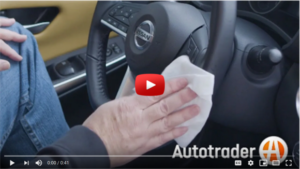 The Coronavirus has changed our lives, there is just no denying that. Hopefully, we are all doing more to help stop the spread of this virus, including washing our hands on a regular basis and keeping social distance from others.
The Coronavirus has changed our lives, there is just no denying that. Hopefully, we are all doing more to help stop the spread of this virus, including washing our hands on a regular basis and keeping social distance from others.
While the novel Coronavirus (COVID-19) is serious and deadly, any flu should be taken seriously. Both the new coronavirus and various seasonal flu strains can be especially dangerous for seniors with underlying conditions as well as children.
While statistics are changing daily for the Coronavirus, we know that the flu sends more young children to the hospital than any other vaccine-preventable illness, according to the Centers for Disease Control and Prevention.
While a vaccine is available for the flu for children as young as 6 months old, there is not currently a vaccine available for the Coronavirus.
Clean and Disinfect:
All this said, as with the flu, prevention of Coronavirus is key. Clean and disinfect frequently touched surfaces daily, and that includes your vehicle. Germs will happily hitch a ride from your trip to the supermarket or elsewhere back to your vehicle.
Most of us are trained to wipe down frequently-touched surfaces in our homes (door knobs, light switches) whenever someone has the flu or a nasty cold. But how often do those practices carry over to the family car? Not often, according to a recent Expedia group study cited by CNN Travel.. It found that one-third (32%) of people surveyed only clean their car once a year. Yikes! Think about all the things inside your car you touch.
-
- The steering wheel is constantly touched. The aforementioned Expedia-owned CarRentals.com study found that steering wheels have four times as many germs than a public toilet seat. They should be wiped down with a disinfectant wipe or spray daily.
- Don’t forget the exterior and interior door handles, your gear shifter, the climate control buttons and radio knobs or buttons, the rearview mirror, and your center console including the cupholders.
- Look for specific wipes available made for cleaning your car’s leather.
- Use microfiber cloths to wipe down touchscreens.
- Use a disinfectant wipe on the dash and door panels.
- Wipe down your key fob.
- Pay attention to your A/C vents, floor mats and the trunk as well. Real Simple Magazine cites a study that found they are some of the germiest places in your vehicle and gives tips on how to clean those areas.
What To Keep In The Car:
-
- Box of tissues: While it’s questionable as to whether your kids will actually use them, keeping tissues handy will hopefully encourage your children to use them when they sneeze. While you’re at it, keep a small trash bag in the back seat to gather the used tissues. Empty it daily.
- Hand sanitizer: Keep this on hand for easy cleanups when kiddos didn’t have enough time to grab a tissue before sneezing. You can use it on your hands after pumping gas as well. According to the Centers for Disease Control, use a hand sanitizer that contains at least 60% alcohol.
- Sanitary wipes or spray: These are great for wiping down not only the kidlets, but car surfaces like the dash and door panels. Think twice before using bleach wipes in your car because the harsh chemicals could damage the interior.
Cleaning Child-Safety Seats:
A major place germs hide out in the car is in car seats. They can get really dirty and hold a lot of germs. Don’t forget to sanitize them. Cleaning a car seat requires a couple of steps:
-
- First, read the car seat’s manual before doing anything. Any missteps when cleaning it could make the car seat unsafe.
- To clean the car seat’s plastic shell, most manufacturers recommend using a damp cloth and mild soap. The seatbelt straps should be wiped down with a damp cloth, too. Some manufacturers allow the use of a mild soap to clean it, but check before cleaning.
- Don’t wash the seatbelt straps in the washing machine because it can affect its fiber strength and wash away fire retardants.
Again, read the owner’s manual before washing or consider having it done by a detailing professional. Some manufacturers allow the covers to be machine-washed (and likely air-dried), while others prefer hand shampooing and air-drying.
Some final thoughts, if you are prone to allergies, find out if your vehicle has a cabin air filter, it probably does. If it has one, most people should change those filters every 15,000 miles to keep the air as clean as possible in your vehicle. If you are wiping down your leather seats, it is a good idea to apply some leather conditioner once the risk has subsided. Cleaners can cause the leather to dry out and crack if not treated.
Source: CarProUSA